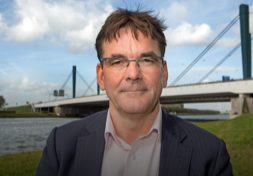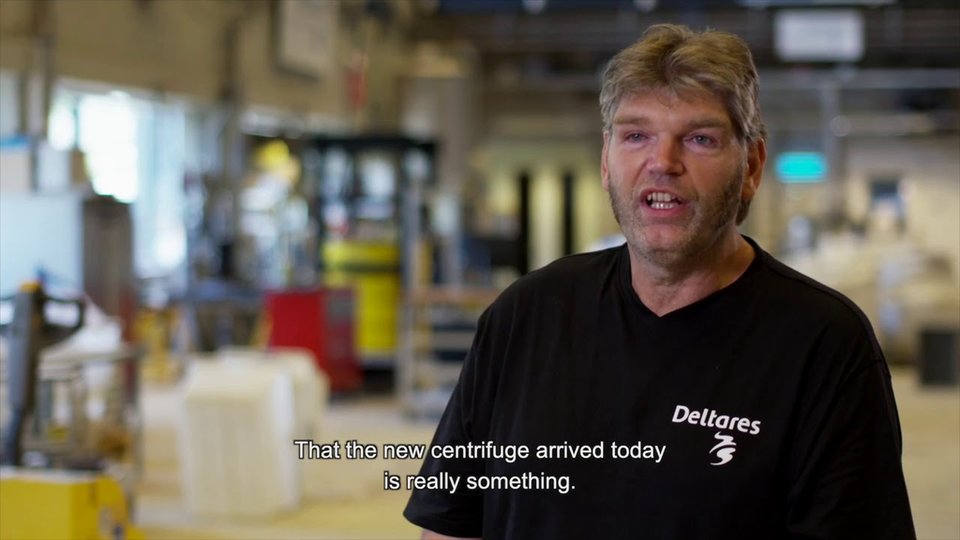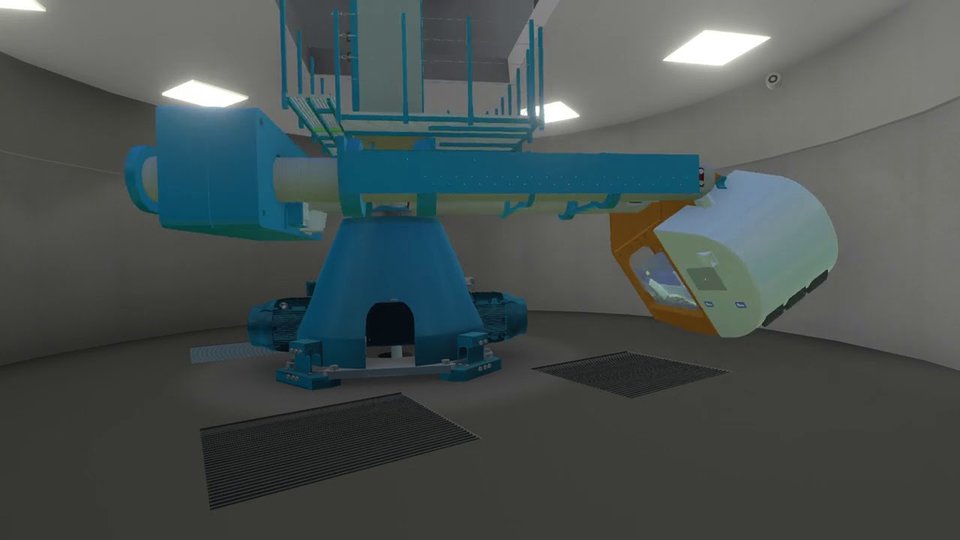GeoCentrifuge accelerates geotechnical processes
The Deltares GeoCentrifuge simulates geotechnical processes to scale. This unique research facility actually speeds up time. The knowledge acquired can be used to improve flood risk management or to help build larger offshore wind turbines.
You can get a brief impression of what 5g feels like in a roller coaster: five times your own bodyweight pushing against you. The Deltares GeoCentrifuge can generate 150g. “That says something about how fantastic this facility is. In terms of size, it's in the European top three,” says Harm Aantjes, Transport Infrastructure & Structures manager. By raising gravitational forces in the centrifuge, we can simulate processes from the field on a miniature scale. In addition, we can, as it were, accelerate time. So we can shorten processes in the ground that would normally be spread over several years to a few hours. “That allows us to test structures that we haven't built yet,” says Aantjes.
Watching tests live
Government authorities, engineering firms, research institutes and the offshore industry keep a close eye on applications of the GeoCentrifuge, which also has a development environment to validate measurement data and convert them for use in computer models. That environment can be used for a range of different tests, including scientific research. The results and the video images can be viewed live on the Internet.
Watch
this
video
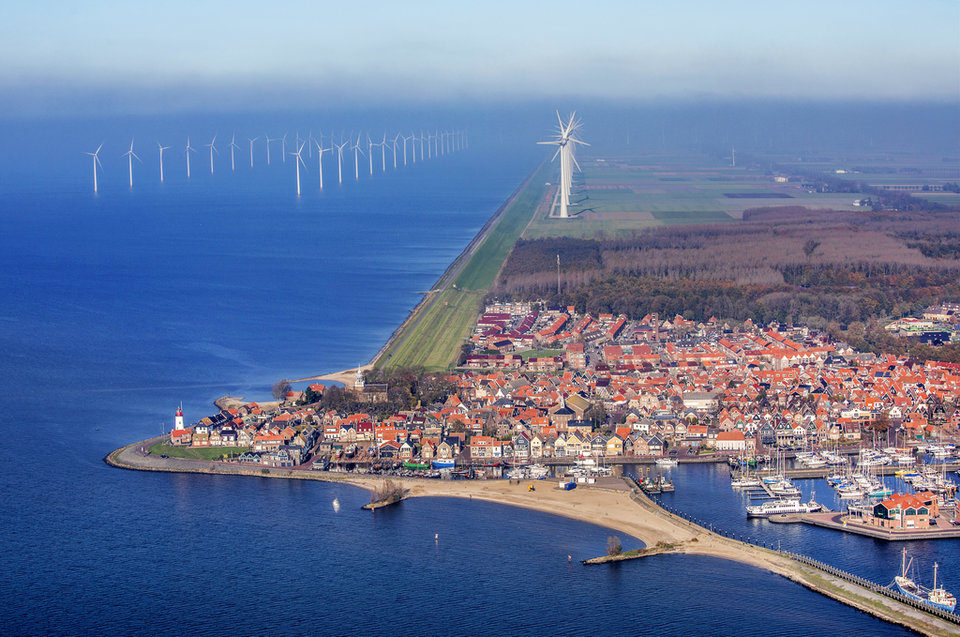
These are the first three studies in the centrifuge:
Wind turbines
Wind turbines are getting bigger all the time. In 2025, wind turbines in the North Sea will be 300 metres high. Sizes like this are unprecedented and that has an impact on design and execution. Deltares uses the centrifuge to test, among other things, the foundations of the turbines to scale.
Safe dikes
Dikes have to be safe. Deltares will be modelling a dike to scale and testing it in the centrifuge under extreme conditions. Aantjes: “We can test conditions that are hardly ever seen in real life, such as extremely high water levels or drought. We didn't used to pay much attention to the second but we want to know more about it now the climate is changing.”
Effects of ageing, increasing use and climate change
Europe's infrastructure in the water, energy, urban transport and goods transport sectors is facing major challenges: from the effects of extreme weather to ageing, and increased use. GEOLAB is a European alliance established to develop knowledge for solutions. Harm Aantjes: “We will be working in the GeoCentrifuge with our partners to investigate the effects of ageing, increasing use and climate change on both existing and new infrastructure.”
More information
If you want to know more about this study, don't hesitate to get in touch.
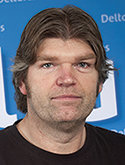
Rob Zwaan
Operator GeoHal

Harm Aantjes
Manager of Soil & Structures department
GeoCentrifuge
The installation was built by a French company.
For safety reasons, when the centrifuge is running, no one is allowed into the room.
Operations can be conducted during the flight with a robot.
The tests can be followed on high-speed cameras.
It took ten years, from the planning stage to construction, to develop the centrifuge.
Length of arm:
5 metres
Maximum number of revolutions:
3 per second
Capacity:
260 g-tonnes
Maximum g-force:
150
Drive unit:
2 x 135 kW electromotors
Maximum speed:
347 km/hour
Dimensions of container:
1.2x1.2x1.8 metres
